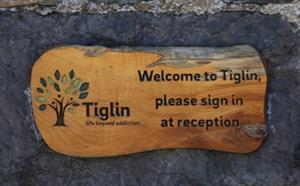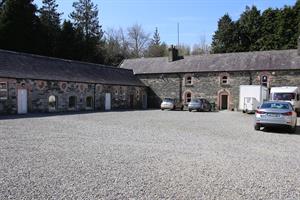Steve Jordan explains how AMC removals in Ireland has used its contacts to create an extraordinary charitable initiative that is helping homeless people get their lives back on track. You can do it too.
 This story is too short. It’s too short because to tell you everything about the charitable work that Aubrey McCarthy and his team do in Ireland would take the whole of this issue of The Mover, probably more. It’s also short because I want you to read it. So please do, right to the end. I guarantee, you will be inspired.
This story is too short. It’s too short because to tell you everything about the charitable work that Aubrey McCarthy and his team do in Ireland would take the whole of this issue of The Mover, probably more. It’s also short because I want you to read it. So please do, right to the end. I guarantee, you will be inspired.
Over the last 15 years or so, Aubrey has helped thousands of people who are suffering with addiction in Ireland. He’s helped them in a way that has transformed their lives permanently. Now here’s the thing … almost everything he has done has been made possible because he runs a removal company. No other kind of company could have done it in the same way. What’s more, if you run your own moving company, big or small, you can do it too.
How it started
Let me explain. Aubrey is the owner of AMC Removals in Dublin, a company founded by his father in 1969. In the early 2000s, he was volunteering at a homeless centre in Dublin where he met Phil Thompson, they were to become partners in a charitable venture that was to expand beyond their wildest dreams.
Aubrey had an idea. He bought a bus and converted it into a café, which he parked five nights a week in the centre of Dublin, to provide homeless people with food, blankets and the opportunity to socialise. He called it the No Bucks Café, because everything was free. Aubrey’s friends and family provided the food. The logo he unashamedly ripped off from Starbucks.
Over time the homeless people volunteered to work in the bus. Eventually it was run entirely by homeless volunteers. “We had beautiful leather couches inside so people could stay and have a chat,” said Aubrey. “Many of the people had trouble with addiction.”
 Aubrey explained that he and Phil wondered if there was a way to help them. Government schemes were available, but they were only for a few weeks, not nearly long enough to get someone on the right track. “We needed to set up a rehabilitation centre,” he said.
Aubrey explained that he and Phil wondered if there was a way to help them. Government schemes were available, but they were only for a few weeks, not nearly long enough to get someone on the right track. “We needed to set up a rehabilitation centre,” he said.
The breakthrough
In 2007 the ideal place came on the market ...
Photo (above): Tiglin men's rehabilitation centre.